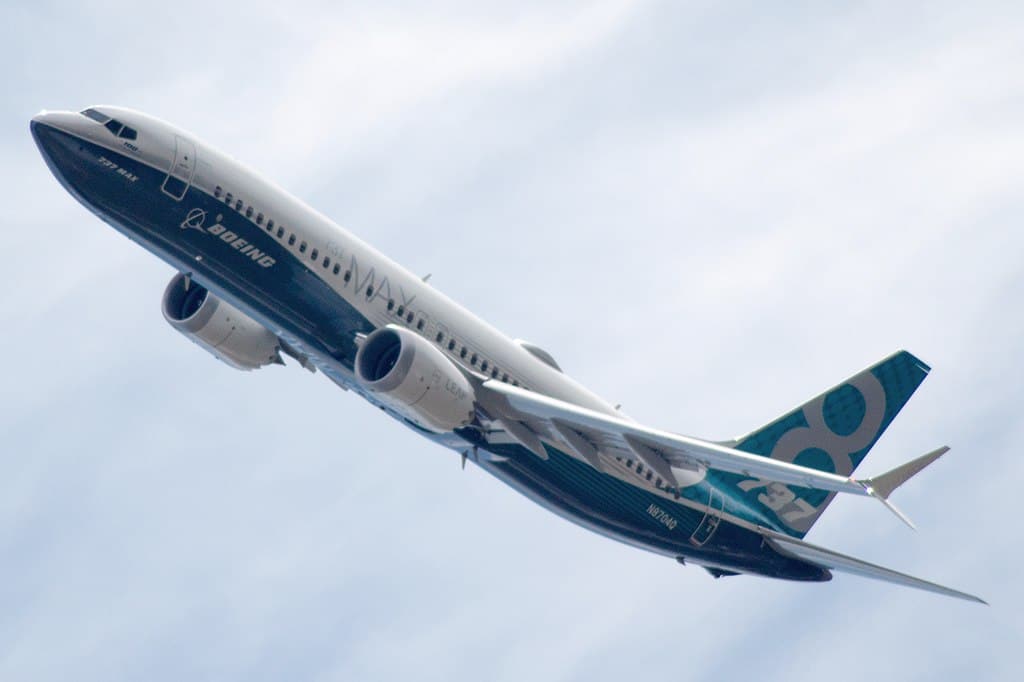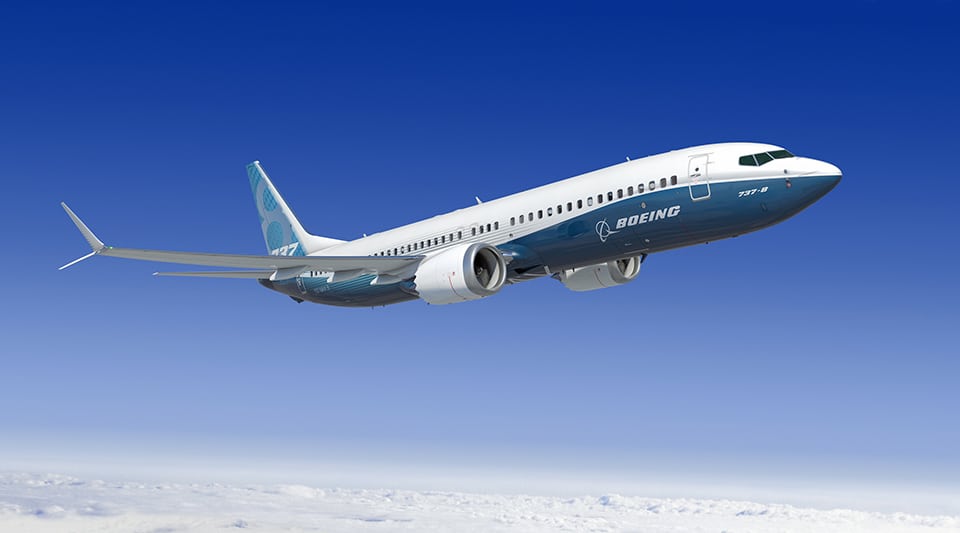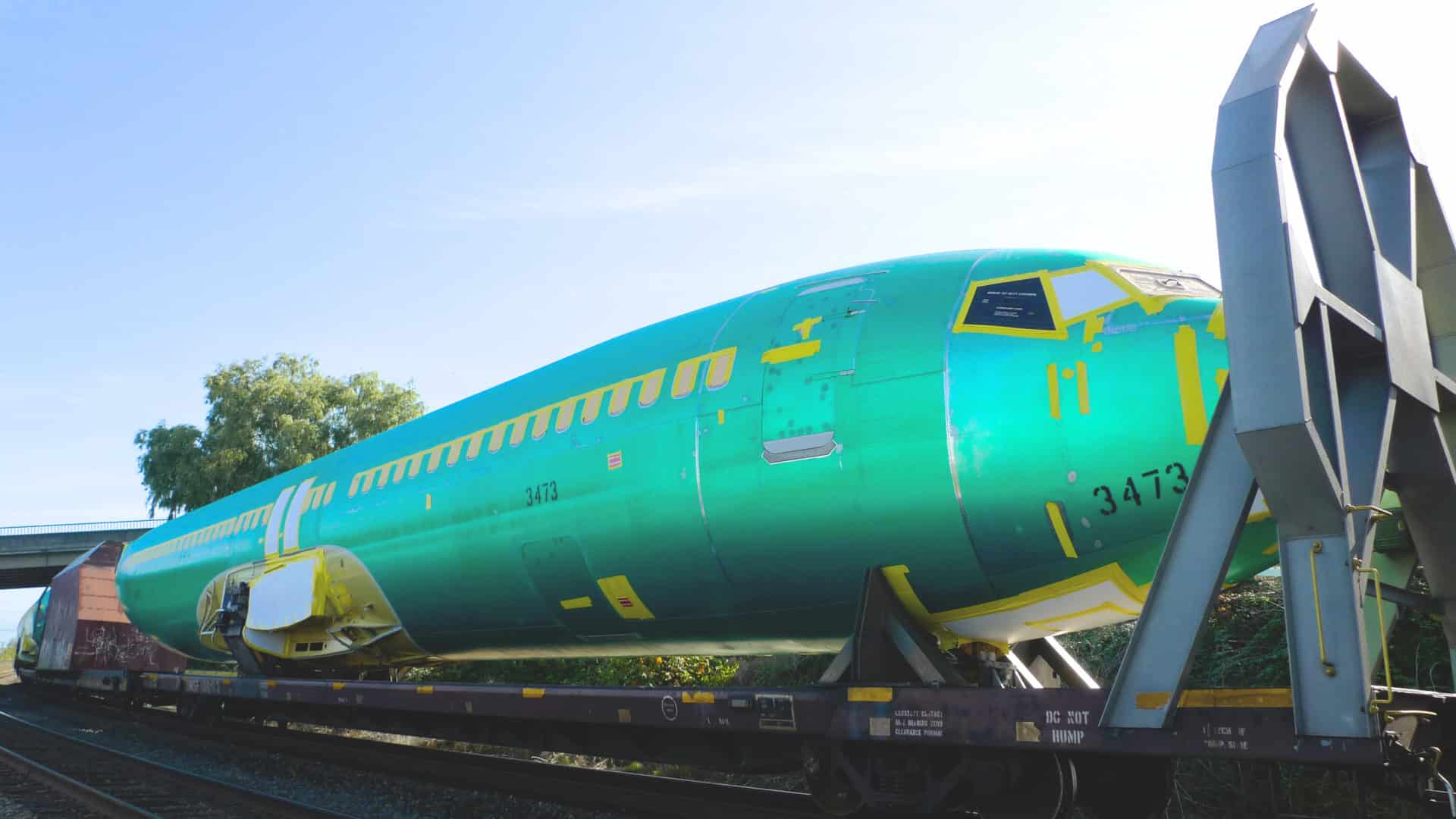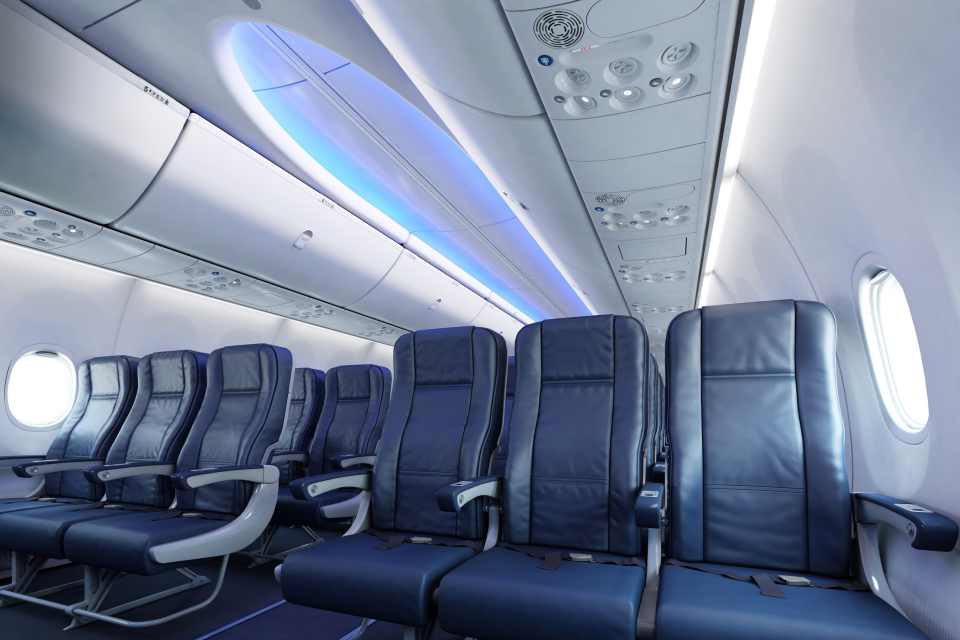Airlines
10 things about Boeing 737 max aircraft.
The Boeing 737 Max is the most recent model of aircraft produced by the Boeing company, and it boasts a number of advantages over earlier models

The Boeing 737 Max is the most recent model of aircraft produced by the Boeing company, and it boasts several advantages over earlier models. We shall learn what features have been introduced to this aircraft in this article.
No 1. Establishment of Boeing 737 max
The Boeing 737 Max is an enhanced version of the 737. Boeing is the manufacturer of this airliner’s narrow body. In the market, it faces up against the Airbus A320 family. On January 29, 2016, the Boeing 737 Max made its inaugural flight. the Federal Aviation Administration certified it
No2. Flight deck and Twin-Engine Airliner
The flight deck can house the pilot and a co-pilot and is equipped with a common display system supplied by Honeywell Air Transport Systems. The CDS consists of six flat-panel liquid crystal displays, and new line of aircraft is designed to provide consumers in the single-aisle category better fuel efficiency. To reduce weight, the flying controls use fly-by-wire spoilers rather than a mechanical system. To increase cabin pressurization, the aircraft has electronic bleed air systems and anti-icing equipment. The 737 MAX’s interior is outfitted with the popular Boeing Sky Interior.
A sustainable source of power LEAP-1B engine provides Boeing 737 MAX operators with improved performance in terms of fuel consumption and CO2 emissions (15 percent ), NOx emissions, and noise emissions (up to 50 percent). The list price for the engine purchase is US$348 million , and deliveries are expected to start in 2022. The LEAP-1B-powered Boeing 737 MAX aircraft is a key element.
No 4. Feature about 737 max
The 737 MAX is Boeing’s most modern 737 to date in terms of technology. New, fuel-efficient engines and advanced flight deck layout are features of the 737 MAX. It has much more efficient LEAP-1B engines that offer higher fuel economy. A more tapered aerodynamic tail cone. This is part of the design advancement to achieve up to a 1% improvement in fuel economy. Boeing 787-style engine nacelles with a scalloped casing that allows for cleaner airflow and less drag.
No 5. 737 MAX Winglet has Natural Laminar Flow
Natural Laminar Flow is present on the 737 MAX at Winglet. Boeing solves this with the “Natural Laminar Flow” properties of the 737 MAX AT Winglet by using detailed design, surface materials, and coatings that enable laminar – or smoother – airflow over the winglet. This reduces drag and improves fuel efficiency.
No 6.The 737 Max have a new wing
Boeing has the very latest in advanced winglet technology, the 737 MAX AT Winglet. In addition to the inward, upward and slightly forward lift components of the upper aerofoil, the new lower aerofoil generates a vertical lift component that is vectored away from the fuselage, and also slightly forward. Working together, these provide the perfectly balanced winglet that maximizes the overall efficiency of the wing. Believing there was even more efficiency to be gained on top of the benefits from this ingenious solution.
No 7. Boeing uses iPads to train 737 max pilots
Boeing used iPads to deliver two-hour lessons about the airplane. It also gave pilots a 13-page handbook explaining the differences between the 737 MAX and earlier 737 models. Pilots are often trained on new airplanes with simulators. some pilots could fly the aircraft because its workings were similar to the regular Boeing 737 series. Boeing insisted that simulator training was unnecessary even after American Airlines and Southwest Airline pilots complained of the airplane’s unusual flight pattern.

Airlines
The Nine Freedoms of the Air – Jetline Marvel
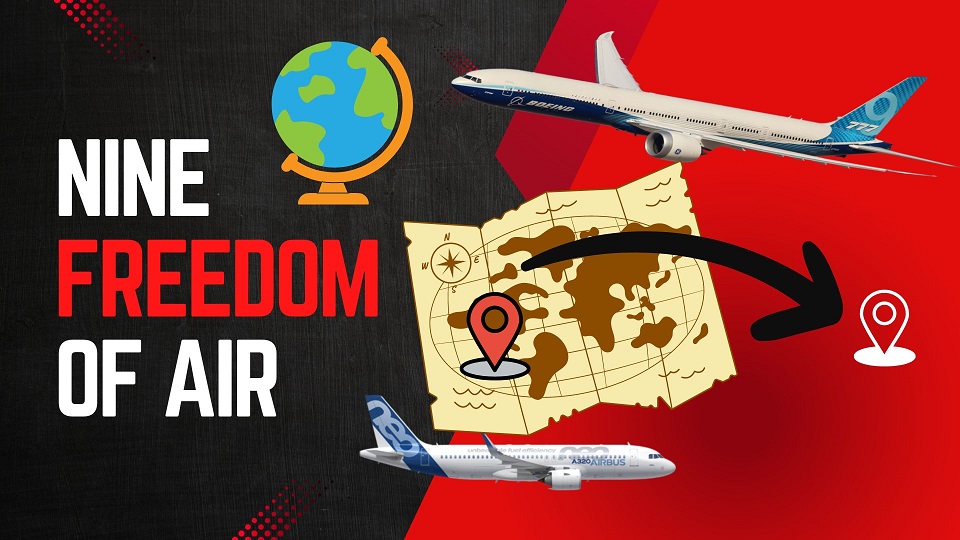
Most of us travel from one city to another city via road we need to get permission to that specific city if it is in another country like a visa or Road access permission to use its property for revenue purposes to carry passengers and Cargo. Similarly, In the airline Industry, it is also important that the Company have permission to fly and access that country whether it’s for stoppage flying above them, or Operating the passengers within that country This is called Freedom of the Air.
Some countries together they agree with certain conditions to access their Aerospace for to access for the airline to travel above their nation. If the bilateral is done for Their own countries’ airlines or other countries’ airlines. In this chapter, we understand how this thing is carried out. What all the condition has to look into that.
The Freedoms of the Air are international commercial aviation agreements (traffic rights) that grant a country’s airline(s) the privilege to enter and land in another country’s airspace. They were formulated in 1944 at an international gathering held in Chicago (known as the Chicago Convention) to establish uniformity in world air commerce. There are generally considered to be nine freedoms of the air.
Most nations of the world exchange first and second freedoms through the International Air Services Transit Agreement. The other freedoms,chase freedom airline miles when available, are usually established between countries in bilateral or multilateral air services agreements. The third and fourth freedoms are always granted together. The eighth and ninth freedoms (cabotage) have been exchanged only in limited instances
First Freedom:
The basic permission granted to an airline from one country (A) to fly through the airspace of another country (B)
Second Freedom:
The permission for a commercial airplane from country (A) to land and refuel (often called a technical stop) in another country (B).
Third Freedom :
The privilege for an airline to transport paying (Revenue) passengers from its home country (A) to another country (B).
Fourth Freedom
The rights for an airline to transport paying (Revenue )passengers from another country (B) to the airline’s home country (A).
Fifth Freedom
Fifth Freedom (also known as beyond rights): The rights for an airline to transport passengers from its home country (A) to a destination (B), then pick up and carry passengers to other international destinations (C).
Sixth Freedom:
Sixth Freedom (Combination of Third & Fourth Freedoms) The right for an airline to carry passengers or cargo between two foreign countries (B and C), provided the aircraft touches down in the airline’s home country (A).
Seventh Freedom:
The authorization for an airline to operate flights that start in a foreign country (B), skip its home country (A), and transport passengers to another international destination (C).
Eighth Freedom Air
The rights for an airline to transport passengers from one location within a country’s territory (B) to another point within the same country on a flight originating in the airline’s home country (A). This right is commonly referred to as cabotage and is notably scarce outside of Europe.
Ninth Freedom Air
The entitlement for an airline from a specific country (A) to begin a flight in a foreign country (B) and transport passengers from one location to another within that foreign country. This concept, also referred to as stand-alone cabotage, distinguishes itself from the traditional aviation definition of cabotage by not directly involving the airline’s home country.
Airlines
ANA and Air India Launch Codeshare Agreement for Enhanced Travel Options

The national flag carrier of India, Air India, and All Nippon Airways (ANA) have signed a business deal to initiate a codeshare alliance that will link India and Japan.
Starting on May 23, customers will have more flight options with this cooperation between the two Star Alliance members. By consolidating flights from both airlines onto a single ticket, passengers will be able to go to their selected destinations more quickly. Additionally, both passengers on codeshare flights can take advantage of the premium services that Star Alliance provides to its premium members, like priority boarding and lounge access.
ANA will use its “NH” code on Air India flights between Narita and Delhi, and Air India will add its “AI” code to ANA’s flights between Haneda and New Delhi and Narita and Mumbai. These codes will go on sale on April 23.
Soon, the two airlines hope to add more destinations as part of their growing partnership. Through expanded chances for visitors from both nations to explore each other’s wonders, this agreement will help to strengthen the economic and commercial links between Japan and India. The airlines’ individual websites, reservation systems, and travel companies will all offer codeshare flights for sale.
Chief Commercial & Transformation Officer of Air India Nipun Aggarwal stated, “This codeshare agreement with All Nippon Airways marks an important step forward in connecting India and Japan.” “This partnership increases our network’s reach and provides our customers with more options for flights between the two nations as well as seamless travel experiences. We anticipate working well with ANA and looking at potential future collaboration opportunities.”
Airlines
An A320 plane flew for 28 minutes with both pilots asleep

In a startling incident, an Airbus A320 operated by an Indonesian airline, Batik Air, flew for a harrowing 28 minutes with both pilots asleep at the controls.
The alarming event unfolded on Batik Air Flight 6723, carrying 153 passengers, en route to Soekarno–Hatta International Airport in Jakarta. The saga began when the first officer allowed the captain to take a nap, only to fatigue himself, attributing his drowsiness to caring for his one-month-old twins. As the pilots dozed off, the aircraft veered off-course, prompting concerns from air traffic control (ATC) who lost contact with the flight 90 minutes into its journey.
Despite the pilots being unresponsive for nearly half an hour, ATC managed to track the aircraft using radar as it covered a staggering 210 nautical miles, equivalent to the distance between New York and Washington, D.C. The captain eventually woke up, realizing the perilous situation and rousing his co-pilot.
After correcting the flight path, the captain attributed the radio silence to a “communication problem,” and the plane eventually touched down safely in Jakarta. However, the incident sparked widespread concern and investigation by Indonesia’s transport ministry.
A preliminary report revealed that the second-in-command had not rested adequately before the flight, shedding light on the potential dangers of pilot fatigue. While the identities of the pilots remained undisclosed, the incident underscored the critical importance of ensuring crew members are well-rested and fit for duty.
Despite the gravity of the situation, the swift actions of the awakened captain averted disaster, emphasizing the necessity for robust safety protocols and measures within the aviation industry.

